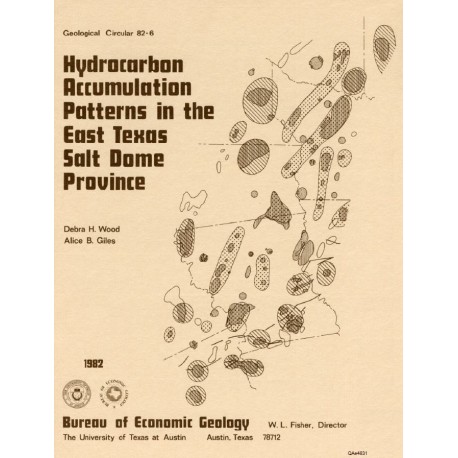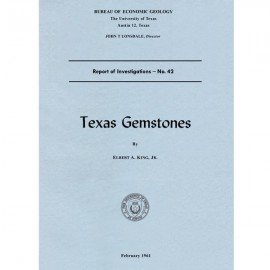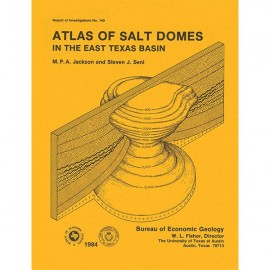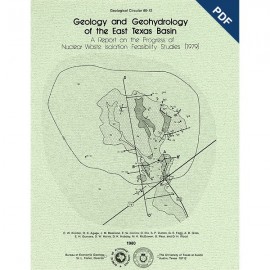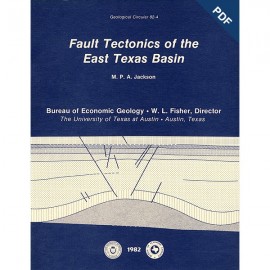Geological Circulars
-
Books & Reports
- Reports of Investigations
- Guidebooks
- Udden Series
- Geological Circulars
- Down To Earth
- Atlases of Major Oil and Gas Reservoirs
- Texas Memorial Museum Publications
- Environmental Geologic Atlas of the Texas Coastal Zone
- Mineral Resource Circulars
- Other Reports
- Seminars and Workshops
- Handbooks
- Submerged Lands of Texas
- Symposia
- Annual Reports
- Open File Reports
-
Maps & Cross Sections
- Thematic Maps
- Miscellaneous Maps, Charts & Sections
- Geologic Atlas of Texas
- STATEMAP Project Maps
- Geologic Quadrangle Maps
- Cross Sections
- Highway Geology Map
- Energy and Mineral Resource Maps
- Shoreline Change and Other Posters
- Wilcox Group, East Texas, Geological / Hydrological Folios
- Bouguer Gravity Atlas of Texas
- River Basin Regional Studies
- Featured Maps
- Posters
- Teachers & the Public
-
Geological Society Publications
- Gulf Coast Association of Geological Societies
- Alabama Geological Society
- Austin Geological Society
- Corpus Christi Geological Society
- Houston Geological Society
- Lafayette Geological Society
- Mississippi Geological Society
- New Orleans Geological Society
- South Texas Geological Society
- GCS SEPM Publications
- Historic BEG & UT Series
Hydrocarbon Accumulation Patterns in the East Texas Salt Dome Province
GC8206
Hydrocarbon Accumulation Patterns in the East Texas Salt Dome Province, by D. H. Wood and A. B. Giles. 36 p., 18 figs., 4 tables, 1982. ISSN: 0082-3309. Print Version.
A free, digital version of this publication can be found on: Texas ScholarWorks
GC8206. Hydrocarbon Accumulation Patterns in the East Texas Salt Dome Province, by D. H. Wood and A. B. Giles. 36 p., 18 figs., 4 tables, 1982. ISSN: 0082-3309. Print.
To purchase this publication as a PDF download, please order GC8206D.
ABSTRACT
Mobilization of the Louann Salt created the present structural configuration in the central part of the East Texas Basin and was the major control on hydrocarbon accumulation in the area. Salt-cored anticlines, turtle-structure anticlines, and salt diapirs were produced by flow of salt. Of these, the most prolific oil- and gas-producing structures have been anticlines with deep salt cores. These deep-seated salt domes uplifted thick stratigraphic sections; thus, their crestal anticlines are multiple-zoned productive structures. Turtle-structure anticlines are less important as hydrocarbon traps. Low productivity of turtle-structure anticlines compared with salt-cored anticlines may result from later development of turtle structures and from uplift of a relatively thinner stratigraphic section. Production associated with shallow salt domes has been relatively minor. If a large amount of oil or gas accumulated over the early pillow forms of these diapirs, then much of it may have leaked along faults associated with dome growth or been caused by erosional breaching of reservoirs over the dome crest after uplift. Deeper exploration of each type of structure (salt-cored anticlines, turtle-structure anticlines, and shallow salt domes) may be productive to the oil and gas companies.
Shallow salt domes in East Texas have been evaluated as repositories for isolation of nuclear waste. A suitable site must not harbor natural resources that might attract interest and lead to future breaching of the repository. Substantial hydrocarbon accumulations have not been discovered at most of the shallow domes in East Texas. However, these domes have attracted much drilling activity primarily because of highly successful exploration of shallow salt domes in the Gulf Coast Basin.
Keywords: East Texas, East Texas Basin, Gulf Coast Basin, Louann Salt, salt domes, turtle-structure anticlines, waste isolation, hydrocarbons, oil and gas
Citation
Wood, D. H., and Giles, A. B., 1982, Hydrocarbon Accumulation Patterns in the East Texas Salt Dome Province: The University of Texas at Austin, Bureau of Economic Geology, Geological Circular 82-6, 36 p.
